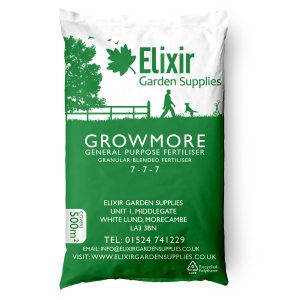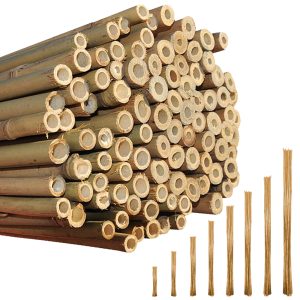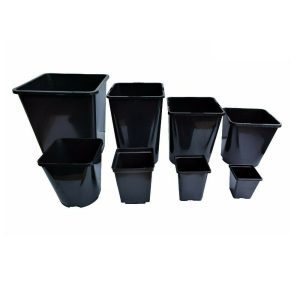Square
Foot
Gardening
In this month’s blog, we will be discussing the advantages of using the Square Foot Gardening (SFG) technique.
It’s creator tells of it’s wonderous effects, how you can grow more in a tighter space, with less wastage, water and more.
So, let’s take a deeper dive into exactly what SFG is.
Up until a couple of years ago I hadn’t heard of the square foot gardening (SFG) method.
But following a conversation with a customer I became curious and wanted to know some more to see if it would be something I could consider doling myself.
SFG has its origins back in the early 70’s and was pioneered by Mel Bartholomew.
At that time Mel was a newly retired engineer who had a passion for making things simpler and more efficient.
What are the benefits of SFG?
Mel is famous for stating that his SFG method meant:
• 100% of the harvest
• 50% of the cost
• 20% of the space
• 10% of the water
• 2% of the work needed for growing the same crops traditionally

Introduction
When you think about it, it does make sense. Single row gardening takes too much time and space, not to mention too many seeds wasted when thinning out rows. Longer beds mean more weeds and therefore more time spent weeding. Walking on the soil, even using a walk board causes the soil to compact, which can then affect the roots.
Another big plus to SFG is that it is great for anyone just starting out in gardening. Many people aspire to have an allotment so they can grow their own food and thereby live their best life. In reality allotment waiting lists can be years long, and for new gardeners, the size of plots can be overwhelming. SFG allows you to start in a manageable way, and produce good size crops that are beyond the space available.
Keeping it small also means that you can easily do this in most gardens, making it fun for you and the kids. Raised beds warm up much more quickly in spring, and can give your plants a couple of weeks head start on those planted directly in the ground.
What does SFG look like?
SFG is traditionally carried out using raised beds that have a maximum width, and depth, of 4ft. The reason being that most people have a reach of 2ft, so this way there is no need to be stepping on the bed. The original sizes recommended were 4ft x 4ft., with a 3ft x 3ft bed for children. As a result each bed is now divided into 1ft squares, defining where to grow your crops.
Obviously you can adapt the size of the bed according to your own needs and space available. In a 4ft x 4ft bed in your own garden you might then place a 2ft x 2ft bed in the centre to add height and interest. Or maybe, as I am doing here, using a collection of our 11 litre pots grouped together. As I am moving home later this year this could be an interesting experiment in making my garden mobile.

If you do make your own bed out of wood then line the inside with a polypropylene lining, rather than one made from PVC which can leach harmful chemicals onto the soil.
Marking out the grid
The fundamental part of SFG is marking out your grid. You can use use wood, canes or twine to mark out the squares spaced at 12 inches apart along each side.
If you are using twine to mark out the grids then pop a screw or nail into the top edge of bed wall and attach the twine. Tie it to the other end then either screw in fully, or nail it in to help keep it secure. If you are using screws then allow a little bit of slack as when screwed down it can tighten up and risk snapping the string.
Using thin wooden laths instead of twine changes the visual look of the bed, giving the appearance of a more substantial structure. Bamboo Canes will work equally well and will give the bed a slightly more natural look.


Verticle Growing
Remember Mel Bartholomew stating that his gardening method uses only 20% of the space of traditional gardening? Well part of the reason for this is that square foot gardening lends itself to vertical growing as well. By growing a squash plant vertically you will only take up one square foot of growing space, rather than the 3ft -10ft you would normally expect to use depending on the crop variety.
The easiest way to grow vertically is to fix tall batons to opposite sides of bed. Adding a top baton stretching across the bed adds more strength. Depending on how the bed sits in relation to the sun will depend on whether you place the frame at the end or in the middle of the bed. Beans and peas are the obvious crops that would benefit from using this method. But remember when growing heavier crops such as squash, then you may need to support the fruit as it grows larger.
Compost
This is incredibly personal to many gardeners. With the phasing out of peat based composts many of the replacements are lacking in structure and nutrients.
Because I don’t have enough of my homemade compost yet, my mix for the beds also contains shop bought compost. My homemade compost contains plenty of fresh kitchen waste, coffee grounds (I drink a lot of coffee) and eggshells.
That said, I do add volcanic rock dust, EX4 base fertiliser and seaweed meal to the compost before planting. The origins of SFG use a specific compost mix which has no added fertiliser, but personally I am happy to add extra nutrients to the soil mix when I plant out.


Plant What You Eat
Sitting down and working out what you are going to eat before you start to buy seeds for your garden is really important. For instance, plant up a bed specifically for salad crops if that’s your go to food type. Choosing carefully now means less waste later on and helps you make the most of even the smallest bed. Planting smaller amounts also means that you will have less waste when thinning out and packs of seeds will go much further.
The square foot method helps maximise your planting by advising on how many of each plant to sow per grid square. Plant spacing for single varieties can be set out as per our template below.
Small plants have between 6-16 seeds per grid square as they don’t require much space to grow.
Medium sized plants can be planted at 9 per grid square.
Large plants are planted at 4 per grid square.
Extra large plants are planted singularly in the centre of the grid square.
Sun and Shade
You also need to think carefully about what you plant and where.
Shade loving crops like brassicas, beetroot, carrots and salads may be less successful if you plant them in full sun. Tomatoes, squash and peppers won’t appreciate being planted in that shady spot by the garden shed. If you are doing vertical planting then don’t build a vertical frame, which when covered in climbing veg, will then screen everything the other side of it. The rule of thumb is to plant tall plants on the northern side of the box, mid size in the middle and smaller plants in the front facing south.
Try planting crops that like plenty of water together, and the same for ones that don’t need much water. This avoids over or under watering and helps save you time.

How many plants can I grow?
We have listed below some of the most popular plants grow in in UK veg and allotment gardens. The quantity shown is per one foot square in the bed. Simply plant the seeds or seedlings in accordance with the spacing guide in picture, but remember if you use any companion planting to adjust your crop quantity accordingly.
You can download our SFG plant guide here as well as our easy guide to companion planting.
Make it your own
Of course there is no one size fits all when it comes to gardening and SFG is no exception. However with a bit of careful planning and adaptation you can still follow the principles of the square foot garden to create something for your own space.
Square Foot Planting Guide
Companion Planting Guide
Up until a couple of years ago I hadn’t heard of the square foot gardening (SFG) method.
But following a conversation with a customer I became curious and wanted to know some more to see if it would be something I could consider doling myself.
SFG has its origins back in the early 70’s and was pioneered by Mel Bartholomew.
At that time Mel was a newly retired engineer who had a passion for making things simpler and more efficient.
What are the benefits of SFG?
Mel is famous for stating that his SFG method meant:
• 100% of the harvest
• 50% of the cost
• 20% of the space
• 10% of the water
• 2% of the work needed for growing the same crops traditionally

What are the benefits of SFG?
When you think about it, it does make sense. Single row gardening takes too much time and space, not to mention too many seeds wasted when thinning out rows. Longer beds mean more weeds and therefore more time spent weeding. Walking on the soil, even using a walk board causes the soil to compact, which can then affect the roots.
Another big plus to SFG is that it is great for anyone just starting out in gardening. Many people aspire to have an allotment so they can grow their own food and thereby live their best life. In reality allotment waiting lists can be years long, and for new gardeners, the size of plots can be overwhelming. SFG allows you to start in a manageable way, and produce good size crops that are beyond the space available.
Keeping it small also means that you can easily do this in most gardens, making it fun for you and the kids. Raised beds warm up much more quickly in spring, and can give your plants a couple of weeks head start on those planted directly in the ground.
What does SFG look like?
SFG is traditionally carried out using raised beds that have a maximum width, and depth, of 4ft. The reason being that most people have a reach of 2ft, so this way there is no need to be stepping on the bed. The original sizes recommended were 4ft x 4ft., with a 3ft x 3ft bed for children. As a result each bed is now divided into 1ft squares, defining where to grow your crops.
Obviously you can adapt the size of the bed according to your own needs and space available. In a 4ft x 4ft bed in your own garden you might then place a 2ft x 2ft bed in the centre to add height and interest. Or maybe, as I am doing here, using a collection of our 11 litre pots grouped together. As I am moving home later this year this could be an interesting experiment in making my garden mobile.

But if you are not that handy, or would rather reserve your energy for gardening, then our raised bed kits are a perfect choice.
If you do make your own bed out of wood then line the inside with a polypropylene lining, rather than one made from PVC which can leach harmful chemicals onto the soil.
Marking out the grid
The fundamental part of SFG is marking out your grid. You can use use wood, canes or twine to mark out the squares spaced at 12 inches apart along each side.
If you are using twine to mark out the grids then pop a screw or nail into the top edge of bed wall and attach the twine. Tie it to the other end then either screw in fully, or nail it in to help keep it secure. If you are using screws then allow a little bit of slack as when screwed down it can tighten up and risk snapping the string.
Using thin wooden laths instead of twine changes the visual look of the bed, giving the appearance of a more substantial structure. Bamboo Canes will work equally well and will give the bed a slightly more natural look.


Vertical Growing
Remember Mel Bartholomew stating that his gardening method uses only 20% of the space of traditional gardening? Well part of the reason for this is that square foot gardening lends itself to vertical growing as well. By growing a squash plant vertically you will only take up one square foot of growing space, rather than the 3ft -10ft you would normally expect to use depending on the crop variety.
The easiest way to grow vertically is to fix tall batons to opposite sides of bed. Adding a top baton stretching across the bed adds more strength. Depending on how the bed sits in relation to the sun will depend on whether you place the frame at the end or in the middle of the bed. Beans and peas are the obvious crops that would benefit from using this method. But remember when growing heavier crops such as squash, then you may need to support the fruit as it grows larger.
Compost
This is incredibly personal to many gardeners. With the phasing out of peat based composts many of the replacements are lacking in structure and nutrients.
Because I don’t have enough of my homemade compost yet, my mix for the beds also contains shop bought compost. My homemade compost contains plenty of fresh kitchen waste, coffee grounds (I drink a lot of coffee) and eggshells.
That said, I do add volcanic rock dust, EX4 base fertiliser and seaweed meal to the compost before planting. The origins of SFG use a specific compost mix which has no added fertiliser, but personally I am happy to add extra nutrients to the soil mix when I plant out.


Plant what you eat
Sitting down and working out what you are going to eat before you start to buy seeds for your garden is really important. For instance, plant up a bed specifically for salad crops if that’s your go to food type. Choosing carefully now means less waste later on and helps you make the most of even the smallest bed. Plating smaller amounts also means that you will have less waste thinning plants out and packs of seeds will go much further.
The square foot method helps maximise your planting by advising on how many of each plant to sow per grid square. Plant spacing for single varieties can be set out as per our template below.
Small plants have between 6-16 seeds per grid square as they don’t require much space to grow.
Medium sized plants can be planted at 9 per grid square.
Large plants are planted at 4 per grid square.
Extra large plants are planted singularly in the centre of the grid square.
Sun and shade
You also need to think carefully about what you plant and where.
Shade loving crops like brassicas, beetroot, carrots and salads may be less successful if you plant them in full sun. Tomatoes, squash and peppers won’t appreciate being planted in that shady spot by the garden shed. If you are doing vertical planting then don’t build a vertical frame, which when covered in climbing veg, will then screen everything the other side of it. The rule of thumb is to plant tall plants on the northern side of the box, mid size in the middle and smaller plants in the front facing south.
Try planting crops that like plenty of water together, and the same for ones that don’t need much water. This avoids over or under watering and helps save you time.

How many plants can I grow?
We have listed below some of the most popular plants grow in in UK veg and allotment gardens. The quantity shown is per one foot square in the bed. Simply plant the seeds or seedlings in accordance with the spacing guide in picture, but remember if you use any companion planting to adjust your crop quantity accordingly.
You can download our SFG plant guide here as well as our easy guide to companion planting.
Make it your own
Of course there is no one size fits all when it comes to gardening and SFG is no exception. However with a bit of careful planning and adaptation you can still follow the principles of the square foot garden to create something for your own space.
Share This Blog
Featured Products
-

Artline Garden Black Marker Pen
£4.99 – £19.99 Select options This product has multiple variants. The options may be chosen on the product page -

Growmore 7-7-7 All-Round Fertiliser | Balanced General Purpose Feed | 500g – 25kg | Treats up to 500m² per 25kg Bag
£5.99 – £36.99 Select options This product has multiple variants. The options may be chosen on the product page -

Bamboo Garden Canes | Heavy-Duty Plant Support | 2ft – 10ft
£5.49 – £129.99 Select options This product has multiple variants. The options may be chosen on the product page -

Bathgate Champions Blend 50L Bags – Multiple Quantities Available
£20.99 – £229.99 Select options This product has multiple variants. The options may be chosen on the product page -

Volcanic Rock Dust Organic Fertiliser | Soil Re-Mineraliser and Compost Activator
£5.99 – £34.99 Select options This product has multiple variants. The options may be chosen on the product page -

10cm Stick-In Plant Labels | Various Colours
£4.59 – £255.09 Select options This product has multiple variants. The options may be chosen on the product page -

Garland Raised Growbed | 1m x 1m
£49.99 Add to basket -

Coir Organic Compost Blocks | Premium Peat-Free Growing Media | 10L &75L
£5.99 – £169.99 Select options This product has multiple variants. The options may be chosen on the product page -

EX4 General Purpose Premium Fertiliser | 5-7.5-10 + Trace Elements | Covers up to 750m² | 100g – 25kg Supplied in Bag or Tub
£5.99 – £63.99 Select options This product has multiple variants. The options may be chosen on the product page -

Square Plastic Plant Pots | 0.25L – 11L
£5.79 – £2,100.99 Select options This product has multiple variants. The options may be chosen on the product page -

Fish, Blood & Bone | Multi Purpose Organic Fertiliser / Plant Food | NPK 5-5-6 | 25kg treats 360sq.m when applied at 70gsm
£5.99 – £40.99 Select options This product has multiple variants. The options may be chosen on the product page -

Seaweed Meal Fertiliser | 500g-20kg | Plant Feed, Lawn Conditioner & Soil Fertiliser
£6.99 – £99.99 Select options This product has multiple variants. The options may be chosen on the product page













